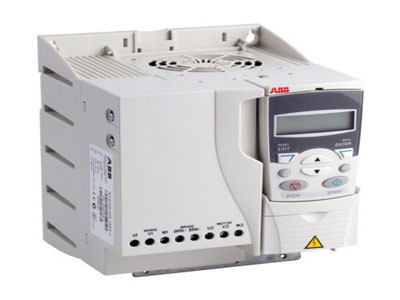What Is Rack In PLC?
Key Takeaway
In PLC systems, a rack is a frame that houses various PLC modules like the CPU, power supply, and I/O modules. These modules are interconnected electrically through a backplane, allowing communication and power distribution. The rack organizes and secures the modules in a row, either in an open housing or on a DIN rail. This setup simplifies the installation, maintenance, and expansion of PLC systems. Racks are essential for creating a scalable and organized PLC system, facilitating efficient industrial automation and control.
Understanding PLC Rack Systems
PLC rack systems encompass a series of interconnected modules housed within a physical enclosure, known as the rack. These systems are designed to accommodate diverse modules, including CPU (Central Processing Unit) modules, input modules, output modules, communication modules, and specialty modules, facilitating versatile automation solutions tailored to specific industrial needs.

Components of a PLC Rack
In the intricate world of PLC racks, several pivotal components come together, akin to pieces of a puzzle, to form a cohesive and functional system.
At the heart of the rack lies the CPU module, acting as the command center or brain of the PLC, orchestrating the execution of programmed tasks and ensuring seamless operation. Input modules stand ready to receive signals from an array of external devices, such as sensors or switches, translating real-world data into digital information that the PLC can comprehend and act upon.
On the flip side, output modules serve as messengers, conveying control signals from the PLC to various actuators, motors, or other devices, thereby effecting changes in the physical environment. Ensuring uninterrupted operation, power supplies provide the necessary electrical energy to power the entire system, safeguarding against disruptions and ensuring reliability.
Lastly, communication modules facilitate the exchange of data between PLCs and external systems, enabling seamless integration and interoperability in industrial environments.
Together, these components form the backbone of a PLC rack, laying the foundation for efficient and reliable automation solutions tailored to the unique needs of diverse industrial applications.
Advantages of Using Rack-Mounted PLCs
Rack-mounted PLCs emerge as a beacon of efficiency and adaptability in the realm of industrial automation, offering a multitude of advantages to engineers and operators alike.
The modular flexibility inherent in rack-mounted PLCs serves as a cornerstone for seamless customization and scalability, enabling engineers to tailor automation solutions precisely to evolving requirements. This flexibility empowers businesses to optimize their processes efficiently without the constraints imposed by rigid system architectures.
Furthermore, the encapsulation of critical components within a secure enclosure ensures enhanced reliability and robustness, safeguarding against the adverse effects of environmental factors such as dust, moisture, or temperature fluctuations. This protective shield not only extends the lifespan of the PLC system but also minimizes the risk of unexpected failures, thus bolstering operational continuity and efficiency.
In the dynamic landscape of industrial automation, where adaptability and reliability reign supreme, rack-mounted PLCs stand tall as a testament to innovation, offering a robust foundation upon which businesses can build their automation endeavors with confidence and ease.
Configuring and Expanding PLC Racks
Configuring and expanding PLC racks entails a meticulous approach, requiring engineers to navigate through a myriad of considerations to ensure smooth operations and scalability. Assembling a rack involves more than just slotting modules; it demands a deep understanding of module compatibility, power requirements, and communication protocols to create a cohesive and efficient system. Engineers must meticulously plan the layout, ensuring that each module harmonizes with the others to avoid compatibility issues and streamline communication.
Expanding PLC racks presents another layer of complexity, as engineers must meticulously document existing configurations, anticipate future needs, and meticulously plan for expansion. Testing and validation play a pivotal role in this process, as engineers must ensure that the newly added modules seamlessly integrate with the existing setup without causing disruptions or system errors. With proper planning and execution, configuring and expanding PLC racks can unlock new levels of performance and scalability, empowering businesses to adapt to evolving automation needs with confidence and efficiency.
Maintenance and Troubleshooting of PLC Racks
Maintenance and troubleshooting of PLC racks are indispensable tasks vital for ensuring the seamless operation of industrial automation systems while minimizing potential downtime. Regular maintenance routines involve thorough inspections of physical components, such as modules, power supplies, and communication interfaces, to detect any signs of wear, corrosion, or damage. Firmware and software updates must also be periodically implemented to keep the system up-to-date with the latest features and security patches. Additionally, routine tests and diagnostics help verify the integrity of the system, ensuring it remains reliable and efficient.
In the event of system malfunctions or errors, troubleshooting becomes crucial. Engineers must possess a deep understanding of the PLC architecture and its components to efficiently identify and address issues. Common troubleshooting tasks include diagnosing module failures, resolving communication errors, and rectifying power supply issues. Utilizing diagnostic tools such as multimeters, oscilloscopes, and PLC programming software aids in pinpointing the root cause of the problem swiftly and accurately. By diligently performing maintenance tasks and adeptly troubleshooting issues, engineers can uphold the reliability and performance of PLC racks, thereby maximizing productivity and minimizing operational disruptions in industrial settings.
Conclusion
In conclusion, PLC racks play a pivotal role in optimizing automation solutions across various industries. By understanding the components, advantages, and maintenance procedures associated with PLC racks, engineers can design, implement, and maintain robust automation systems that meet the demands of modern industrial environments. With proper configuration, expansion, and maintenance, PLC racks serve as a cornerstone for achieving efficient and reliable automation solutions.
